Daan Delabie
Anchor Layout Optimization for Ultrasonic Indoor Positioning Using Swarm Intelligence
May 15, 2024Abstract:Indoor positioning applications are craving for ever higher precision and accuracy across the entire coverage zone. Optimal anchor placement and the deployment of multiple distributed anchor nodes could have a major impact in this regard. This paper examines the influences of these two difficult to approach hypotheses by means of a straightforward ultrasonic 3D indoor positioning system deployed in a real-life scenario via a geometric based simulation framework. To obtain an optimal anchor placement, a particle swarm optimization (PSO) algorithm is introduced and consequently performed for setups ranging from 4 to 10 anchors. In this way, besides the optimal anchor placement layout, the influence of deploying several distributed anchor nodes is investigated. In order to theoretically compare the optimization progress, a system model and Cram\'er-Rao lower bound (CRLB) are established and the results are quantified based on the simulation data. With limited anchors, the placement is crucial to obtain a high precision high reliability (HPHR) indoor positioning system (IPS), while the addition of anchors, to a lesser extent, gives a supplementary improvement.
An Open Dataset Storage Standard for 6G Testbeds
Nov 05, 2023

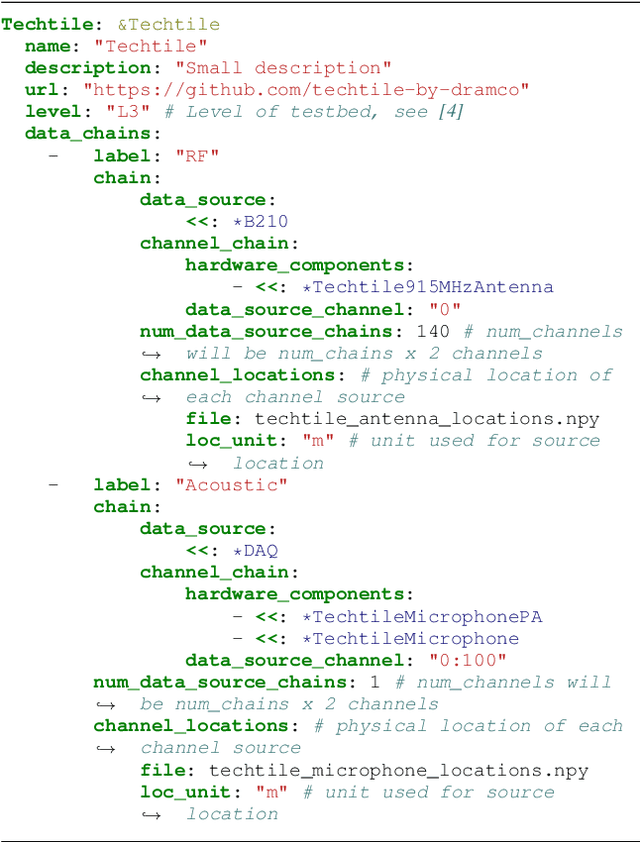

Abstract:The emergence of sixth-generation (6G) networks has spurred the development of novel testbeds, including sub-THz networks, cell-free systems, and 6G simulators. To maximize the benefits of these systems, it is crucial to make the generated data publicly available and easily reusable by others. Although data sharing has become a common practice, a lack of standardization hinders data accessibility and interoperability. In this study, we propose the Dataset Storage Standard (DSS) to address these challenges by facilitating data exchange and enabling convenient processing script creation in a testbed-agnostic manner. DSS supports both experimental and simulated data, allowing researchers to employ the same processing scripts and tools across different datasets. Unlike existing standardization efforts such as SigMF and NI RF Data Recording API, DSS provides a broader scope by accommodating a common definition file for testbeds and is not limited to RF data storage. The dataset format utilizes a hierarchical structure, with a tensor representation for specific experiment scenarios. In summary, DSS offers a comprehensive and flexible framework for enhancing the FAIR principles (Findability, Accessibility, Interoperability, and Reusability) in 6G testbeds, promoting open and efficient data sharing in the research community.
An Acoustic Simulation Framework to Support Indoor Positioning and Data Driven Signal Processing Assessments
May 04, 2023Abstract:We present an indoor acoustic simulation framework that supports both ultrasonic and audible signaling. The framework opens the opportunity for fast indoor acoustic data generation and positioning development. The improved Pyroomacoustics-based physical model includes both an image-source model (ISM) and ray tracing method to simulate acoustic signaling in geometric spaces that extend typical shoe-box rooms. Moreover, it offers the convenience to facilitate multiple speakers and microphones with different directivity patterns. In addition to temperature and air absorption, the room reverberation is taken into account characterized by the RT60 value or the combination of building materials. Additional noise sources can be added by means of post processing and/or extra speakers. Indoor positioning methods assessed in simulation are compared with real measurements in a testbed, called 'Techtile'. This analysis confirms that the simulation results are close to the measurements and form a realistic representation of the reality. The simulation framework is constructed in a modular way, and parts can be replaced or modified to support different application domains. The code is made available open source.
Techtile: a Flexible Testbed for Distributed Acoustic Indoor Positioning and Sensing
Apr 13, 2022



Abstract:The proposed infrastructure, named Techtile, provides a unique R&D facility as features dispersed electronics enables transmission and capturing of a multitude of signals in 3D. Specific available equipment that enhances the design process from smooth prototyping to a commercial product is discussed. The acoustic parameters of the room, particularly the reverberation and ambient noise, are measured to take these into account for future innovative acoustic indoor positioning and sensing systems. This can have a positive influence on the accuracy and precision. The wooden construction represents an acoustically challenging room for audible sound with a maximum measured RT60 value of 1.17s at 5kHz, while for ultrasound it is rather challenging due to the present ambient noise sources. In general, the Techtile room can be compared with a home or quiet office environment, in terms of sound pressure levels (SPLs). In addition to the acoustic properties, possible research and development options are discussed in combination with the associated challenges. Many of the designs described are available through open source.
Techtile -- Open 6G R&D Testbed for Communication, Positioning, Sensing, WPT and Federated Learning
Feb 09, 2022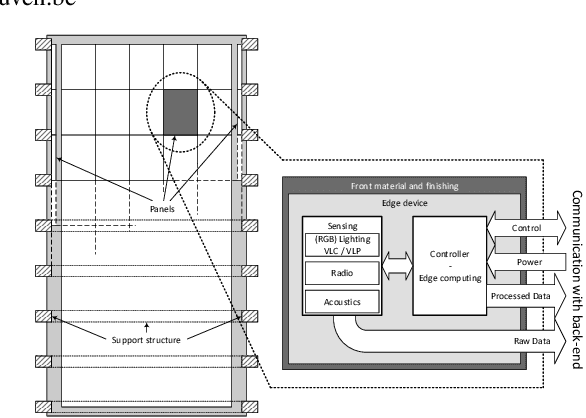
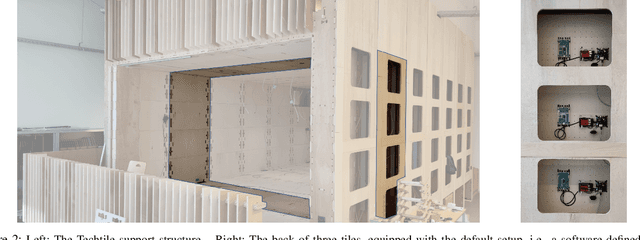
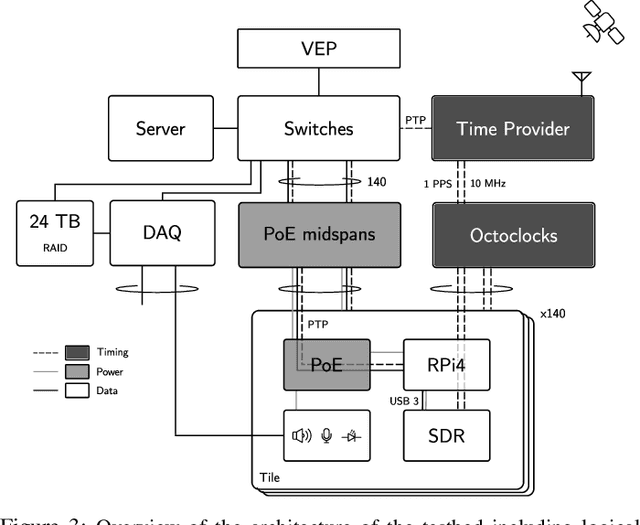
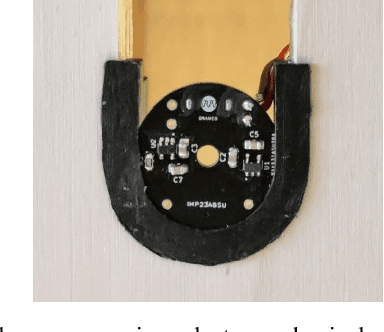
Abstract:New concepts for next-generation wireless systems are being developed. It is expected that these 6G and beyond systems will incorporate more than only communication, but also sensing, positioning, (deep) edge computing, and other services. The discussed measurement facility and approach, named Techtile, is an open, both in design and operation, and unique testbed to evaluate these newly envisioned systems. Techtile is a multi-functional and versatile testbed, providing fine-grained distributed resources for new communication, positioning and sensing technologies. The facility enables experimental research on hyper-connected interactive environments and validation of new algorithms and topologies. The backbone connects 140~resource units equipped with edge computing devices, software-defined radios, sensors, and LED sources. By doing so, different network topologies and local-versus-central computing can be assessed. The introduced diversity of i) the technologies (e.g., RF, acoustics and light), ii) the distributed resources and iii) the interconnectivity allows exploring more degrees and new types of diversity, which can be investigated in this testbed.
 Add to Chrome
Add to Chrome Add to Firefox
Add to Firefox Add to Edge
Add to Edge